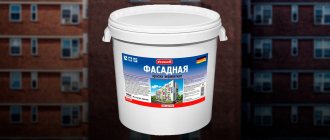Plastic windows lead the construction market in terms of their popularity. Joinery products made of polyvinyl chloride have good thermal protection and sound insulation properties. They are durable, practical and relatively inexpensive. They do not need to be sealed for the winter, painted, and are not at all difficult to keep clean. Thanks to these qualities, PVC windows are in constant demand among consumers. Polyvinyl chloride structures are used in both individual housing construction and mass construction. However, PVC windows have one peculiarity - in the autumn-winter period they often “cry”. Why does condensation form on the window surface? And how to avoid such trouble?
Why does condensation appear on windows?
People who have wooden window frames often complain that condensation appears only on a new PVC window.
This is explained by the fact that wood fibers allow water vapor to pass through better. Often old frames were covered with invisible microcracks, from which a draft blew in in winter. The room could become very cold, but constant air circulation prevented excess humidity from accumulating. PVC glazing is completely sealed, so dampness simply has nowhere to go. The main reasons for condensation settling on windows are:
- high humidity;
- impaired convection;
- disrupted microclimate;
- problems with the glass unit or its assembly;
- incorrect installation;
- manufacturing defects.
Let's look at them in order.
Modern plastic windows are free from most of the shortcomings of their wooden predecessors. They protect from cold, street dampness, wind and noise. They do not require regular tinting or sealing with paper strips. When installing security fittings, the degree of burglary resistance increases. However, one common problem with wooden and PVC structures remains: condensation still often appears on them.
conclusions
To prevent windows from fogging up, certain measures should be taken. The main condition is that the double-glazed windows must be installed correctly. They should not have any leaks. Other precautions:
- regular ventilation of rooms where condensation occurs;
- creating high-quality ventilation in the house;
- correct choice of profile and glass unit.
By complying with these conditions, you can reduce the risk of condensation on the windows. If it does appear, you should use some ways to eliminate it.
For example, you can put a fan or a candle on the windowsill. In both cases, warm air will warm the glass, which will prevent condensation from settling. Often the cause of window fogging is a large window sill. It can be cut so that heat flows upward from the battery unhindered.
When performing window repairs or installations, you should contact experienced professionals. This will eliminate the risk of double-glazed windows fogging.
Recommended Posts
Do-it-yourself window trim + photo
Do-it-yourself window trim with siding + video
How to make a window out of wood with your own hands + drawings
Plastic windows with layout + photo
Security blinds for windows
Hood for cornice
Comments
- Hello, I have a problem with the euro window, condensation is sweating, I think I need to move the window 5 cm inward
Oleg21.04.2021 at 04:45
Answer
What is condensate
Condensation is moisture that forms on PVC windows. It looks like fog or fog on the glass. When there is a lot of it, individual drops roll down under the influence of gravity and merge with each other, leading to the appearance of entire streams.
Air always contains water vapor. Its amount varies depending on the temperature: the warmer it is, the more water can be in a gaseous state. When the temperature drops, excess moisture falls on surfaces in the form of small droplets.
During the cold season, the temperature outside is lower than inside the apartment. Because of this, the windows cool down, the air next to them also becomes colder, and therefore it cannot retain the absorbed steam, and it turns into liquid form - condensation.
High humidity
This is the main answer to the question why condensation forms on windows, especially plastic ones.
The room atmosphere is oversaturated with moisture if:
- the roof is leaking;
- basement is too damp;
- ventilation does not work;
- the heating system cannot cope with heating;
- the window sill is filled with flowers;
- There are too many people in the room.
When you breathe, moisture leaves the lungs along with carbon dioxide. The more people in the room, the more active they are (for example, during physical activity), the faster water evaporates from the body. That is why, when condensation collects on plastic windows, they say that it is because those present have “inhaled.”
The dampness increases during cooking. Boiling pots greatly saturate the air with water vapor. Fogging of glass is also observed during water procedures, washing, and wet cleaning. In this case, the problem is solved by ventilation.
Indoor flowers also actively breathe. Water evaporates from the leaves or directly from the pot immediately after watering. If the glass fogs up next to a flower, it is better to move it to another place. You can do the same with another source of dampness - an aquarium.
It's more difficult to get rid of fogging if the problem is a leaky roof or a flooded basement. Here I advise you to contact the company that manages the house. The same can be done if humidity accumulates due to non-functional ventilation. To check it, you need to bring a lighter or candle to the ventilation holes: if the flame deviates towards the ventilation duct, it means it is working properly, but if the fire remains motionless, the ducts need to be cleaned. Sometimes they are unknowingly bricked up by other residents during renovations.
Plastic windows leak when it rains
If it happens that during rain water flows through plastic windows, and you don’t know what to do. Don’t rush to panic, we will help you fix this problem and tell you why moisture is getting in.
Reasons for window leaks:
- Installation errors. Most likely, even when installing the window, the technology of insulation and sealing of seams was violated and because of this the plastic window is leaking.
- The seal has lost its properties, has become depleted, and has dried out. But this only happens if the sealing rubber has been in use for a long time.
- Incorrectly made slopes.
- There is a small amount of foam in the openings or it is of poor quality.
- The drainage is poorly inserted, or it cannot cope with such a volume of water, or it is completely clogged.
- In addition to the leakage of a plastic window during rain, there is another cause for concern - rubbing and fogging of the glass from the inside, the appearance of condensation.
Reasons for the appearance of moisture inside PVC windows:
- Poor quality glass. Often, unscrupulous manufacturers make it from cheap and low-quality materials; subsequently, the double-glazed window does not fully perform its heat-protective function, the glass freezes and condensation appears.
- Insufficient ventilation. You just need to skillfully use the microventilation mode, ventilate the rooms regularly, 10–15 minutes of ventilation per day will be enough.
- Increased humidity in the house. Especially in the kitchen, while cooking or boiling water.
- Incorrect installation, the window is blown out in places and moisture loss is inevitable in winter.
- If a window leaks during renovation, this is normal, because building materials contain moisture and gradually release dampness to the air.
Convection mode
If the ventilation is working properly, the basement is dry, and the roof is not leaking, if the hygrometer shows a normal level of humidity in the room, but condensation still appears on the plastic windows, then the problem may lie in a violation of the convection regime. Convection is the natural movement of air. Warm air flows from the radiators rise upward, cold air flows down. This is how constant circulation of heat occurs.
Normally, convection currents heat window glass - that is why batteries are placed under windows. This heating prevents fogging. If the windows become foggy or leak, I advise you to check whether the window sill is too wide. It often blocks the flow of heat, causing the glazing to remain cold, which attracts steam. This problem is indicated by condensation at the bottom of the plastic window, just in a non-heated place.
There are several ways out:
- The window sill can be shortened.
- If the width cannot be changed, you can make ventilation holes in it or insert ventilation ducts.
- Remove decorative radiator grilles or install structures that better transmit heat.
Convection is also disrupted by long, thick curtains. To get rid of the problem, you can shorten them, hang lighter tulle, or replace them with curtains. Or, if such a decision spoils the design ideas, you can move the cornice so that there is a gap of several centimeters between the fabric and the window sill.
Prevention
Before starting work to get rid of condensation, you should think about preventing the problem. There are several precautions you should take:
- maintaining a comfortable temperature in the room;
- creating a natural ventilation system in the room;
- external insulation of the building;
- reducing the air humidity level in the room to 50%;
- eliminating sources of moisture penetration into the room - leaky roof, dampness in the basement;
- creation of an effective heating system for double-glazed windows.
- Removing plants from the windowsill.
Such precautions will help prevent excessive condensation on the window structure.
The microclimate is disturbed
Another common cause of the problem. Sanitary standards require maintaining a temperature inside residential premises from +18 to +22-23 degrees Celsius. Normal humidity is 30-45%. With these parameters, condensation will not appear on plastic windows. In non-residential rooms the temperature may be higher, but it should not be lower.
The room microclimate is disturbed not only due to sources of excess moisture, which I mentioned above, but also due to insufficient heating. In old houses, cast iron radiators are often clogged, which is why they heat poorly. It is enough to clean them to make the room warmer and the dampness to go away. They are often replaced with new ones made of steel or aluminum, but their service life is shorter than that of cast iron, so I advise you, if possible, not to replace them, but to clean the existing batteries.
If central heating cannot cope, you can install a heated floor system. Another solution is heaters. Installing convectors or fan heaters will also solve the problem of impaired convection. Infrared devices help eliminate mold and dry walls.
Incorrectly selected glass unit and errors in its assembly
Plastic windows need to be selected based on the climatic characteristics of your region. The wrong choice of double-glazed windows and profiles is one of the main reasons why condensation forms in the apartment.
Where winters are warm, a single-chamber double-glazed window is sufficient. It is suitable for southern regions or for cold glazing of balconies and loggias. In the middle zone, or even more so in the north, only double-glazed windows consisting of three glasses should be installed. Additionally, glass can be coated with special coatings that reduce thermal conductivity properties.
If in a cold climate you install a thin profile and a single-chamber double-glazed window, it will cool down too easily due to frost. The dew point will move inside the room - and fogging is inevitable. During severe cold weather, frost and ice form. In this case, there can be no talk of preserving heat. Savings are inappropriate here; it only results in even greater expenses for replacing window components.
If a suitable profile and a reliable double-glazed window are installed, but the glass still flows, an error may have been made during assembly. If drops appear inside the glass unit, this is a 100% defect. This means the seal has been broken.
Illiterate installation of windows and slopes
Installation errors are difficult to notice in summer. They usually appear in winter, when the outside temperature drops. The cause of condensation on plastic windows is insufficient insulation during installation. Excessively thrifty installers often save polyurethane foam and do not fill the seams with it as expected. As a result, voids remain that are unable to retain heat. The glass cools down and fogs up.
The technology requires the use of three-layer insulation. Foam alone is not enough; profiles must be secured using special insulating tapes. Then the foam must be additionally protected from the sun, under whose rays it quickly collapses. To ensure that everything is done correctly, I advise you to contact trusted companies that value their reputation and do not make mistakes.
Condensation can settle not only on windows, but also on walls. Sometimes this happens when the apartment owners, for reasons of economy, decided to install the slopes themselves, but in the process violated the technology. For example, they neglected insulation, insulation, or chose low-quality plaster, paint, or other finishing material. As a result, in winter not only the profile, but also the entire window opening cools down, and the decrease in temperature leads to moisture settling on the wall.
The windows are sweating from the outside
In winter, ice can often form on the outside of the window. It is worth knowing that icing should not occur, because the very absence of heat served to form it and the walls of houses, as a rule, are built specifically for freezing; after a certain time, they collapse.
Read also: What to wear with a white long skirt
Therefore, in winter, when it rains and freezes on the windows, it destroys the brick even more. It follows that moisture can also affect walls.
Defective or incorrectly selected window
Often, when people see condensation on their windows in winter, they blame the company that installed the profiles. However, dissatisfied customers are right in their accusations only 3-5% of the time. Marriage is rare. However, to understand why cloudiness occurs, it is really wise to call installers. They will inspect the window structure, if necessary, use a thermal imager and find the source of the problem. Defects can be indicated by the fact that, with the same humidity in the entire apartment, only one window fogs up.
Both double-glazed windows and profiles have air chambers. Plastic frames are also selected according to climatic conditions. It is better not to save on too thin profiles with three chambers, because they do not retain heat well, easily fail, and are sometimes made of low-quality plastic, especially if you contact dubious companies. According to the standards, the optimal thickness of the outer wall of the profile is 3 mm; for central Russia, the number of chambers should be at least three, and the frame depth should be from 60 mm.
know more
You have questions?
Write!
I'm in touch right now!
Other reasons
Sometimes the sources of moisture are quite unexpected. For example, condensation often appears on windows in a new building or after a major renovation of any building. The fact is that some building materials retain moisture for up to two years. One of them is concrete, cement-sand screed. Other materials - glue, plaster, various mixtures - dry faster, but they can also evaporate excess liquid for weeks.
The opposite situation is that the house is too old. It is exposed to weathering, the exterior finish is gradually destroyed, cracks appear, and drafts arise. The temperature in the room drops, the air gets rid of water vapor, which settles on the glass.
When there has been no repairs for a long time, but the house is like new, the ventilation is working, the heating is working properly, dampness is excluded, the windows can still fog up if there is a very strong frost outside. In this case, there is no need to worry; as soon as it gets warmer, the problem will go away.
The consequences of window fogging and what will happen if you don’t deal with it
The appearance of condensation is not only an aesthetic problem. Many people easily accept the fact that plastic windows, when fogged up, temporarily lose their vaunted transparency. However, neglecting this nuisance can lead to much more serious problems.
Firstly,
the degree of illumination decreases. In winter, the days are already very short, it is better not to deprive yourself of sunlight. It is useful for the eyes, immunity, and finally, for the prevention of clinical depression.
Secondly,
Condensation on windows leads to constant dampness, and this is an ideal environment for the proliferation of pathogens, bacteria, fungi and mold growth. The air becomes musty and unpleasant, like in a damp basement. A runny nose appears, the mood of household members deteriorates, sleep is disturbed, and the risk of getting sick increases.
Thirdly, mold, dampness, and bacteria spoil finishing materials. There is nothing pleasant about green and black stains on slopes, ceilings and wallpaper, and they are very difficult to remove. Constant freezing destroys the insulation, and it begins to blow from the frames. In particularly advanced cases, structures become fragile, which threatens dangerous destruction.
Eliminating fogging of plastic windows
You can deal with the problem in different ways. You can use the help of industrial products that car owners often use, or you can remember old folk recipes:
You can quickly get rid of condensation on windows using ordinary candles. Just place them on the windowsill and light them. The heat generated will warm the surface, after which they will stop sweating. In winter you need to be careful not to place the candle too close to the glass.
- Table salt is actively used to eliminate condensation on windows. To do this, you can use the following recipes: prepare a solution of water (4 liters) and salt (1 tablespoon). First, you should wash the glass surface, and then wipe it with a cloth soaked in liquid. Or simply rub with salt wrapped in a soft cloth.
- If the inside of the windows sweat a lot, you can use the help of glycerin and vodka. Once you treat the glass with the solution, a protective film is formed on it, which will simply prevent condensation from collecting, which means that moisture will stop flowing.
- Grind the chalk to a powder, dilute with water, and carefully treat the glass surface. It is undesirable to touch the glass after treatment; unsightly stains will remain. Chalk can be replaced with tooth powder.
- Old newspaper has been widely used in window cleaning since the last century. The paper copes well with dirt, soap stains, and grease stains. Printing ink can create a water-repellent film on the surface of the glass, which prevents moisture from collecting on the glass. It is enough to wash the window and polish it dry with dry newspaper.
You can get rid of unwanted condensation using industrial means. The Secunda cleaning aerosol has proven itself to be excellent. The composition is sprayed over the surface and thoroughly rubbed with a dry soft cloth.
How to get rid of condensation
Before you start getting rid of condensation, you need to find the exact reason why drops appear on plastic windows. If you were unable to discover the source of the problem on your own, I advise you to call installers from the company that installed the profiles, especially if the warranty is still valid. However, if the company seems unreliable, you can turn to more professional specialists.
There are also universal remedies that you can try before contacting the specialists:
- elimination of heat loss;
- drainage;
- installation of ventilation;
- application of chemistry.
Elimination of heat loss
If condensation appears on windows as a result of problems with thermal insulation, you can:
- replace sealing contours;
- switch windows to winter mode;
- make sure that the cracks around the frame are securely sealed;
- install slopes made of plastic panels with insulation or sandwich panels;
- insulate the walls.
Sealing rubber bands wear out over time and lose their elasticity and tightness. Sometimes they become deformed due to improper use of the window or as a result of accidental damage. All that remains is to replace them with new ones. They are carefully removed, then new rubber bands are inserted into the grooves without stretching.
Profiles released in the last ten to fifteen years support settings for summer, winter and demi-season modes. In winter mode, the sash is adjacent to the frame with the greatest density, in summer mode it is most loose. The tighter the fit, the higher the tightness. In winter, this prevents drafts with freezing, but in summer the cold is not terrible, so the clamp is loosened for ventilation. To switch, you need to turn the eccentrics of the trunnions at the end of the sash.
You need to check the sealing with polyurethane foam under the window sill, as well as along the entire perimeter of the frame, inside and out. If necessary, the voids must be filled, and then the foam must be covered with finishing materials so that it does not collapse from street dampness and ultraviolet radiation. This is done including slopes. I advise you to equip them with plastic panels or sandwich panels. This guarantees tightness, insulation and durability.
The most radical method is complete insulation of the walls. It is better to attach the insulation material to the outside of the building, so this method is not suitable for every high-rise building; it is usually used for private houses. Additionally, you can insulate the roof and floor if necessary.
Useful tips
Sometimes you can solve a problem with condensation relatively quickly, without going through possible options for the appearance of moisture, if you look closely at the foggy window.
- Condensation is only along the contour - the glass does not fit tightly to the frame, there are cracks and gaps. It is necessary to change the seal or supplement it.
- Moisture is only in one corner or along one side. It looks like the sash in this place does not fit tightly to the frame or there are gaps in the wall/slope. We check for drafts and eliminate cracks.
- Spots of condensation near the handles or hinges of the sashes indicate a loose connection of the fittings; everything needs to be checked and adjusted.
- The glass fogs up only near indoor flowers standing on the windowsill. We move the plants to another place - they are warmer, and the glass does not “cry”.
- Moisture is everywhere, not only on the windows - we urgently arrange forced ventilation and warm the room!
The last measure is suitable for all cases of condensation on PVC windows and in rooms in general.
Air dehumidification
This is the second method of combating fogging. Suitable for drying:
- heaters;
- special dehumidifiers;
- improvised means.
If the humidity is not too high, but sufficient to make the glass “cry,” you can spread salt on the windowsill. Any kind will do - sea, food, coarse or finely ground. After some time, it can be calcined in the oven and reused. Wood or activated carbon and silica gel also absorb moisture. If condensation appears at the bottom of a plastic window due to lack of convection, it can be eliminated with ordinary candles. One or two candles can dry the glass, creating heat flows. The main thing is to monitor safety so that there are no flammable objects nearby. I advise you to light thick candles that burn for at least ten hours.
The easiest way to dry out is regular ventilation. Usually it is enough to open the doors three to four times a day for five to ten minutes.
Ventilation installation
If full ventilation is impossible due to severe frosts, you can choose profiles with a micro-ventilation mode. It involves the installation of special fittings. By turning the handle diagonally (about 75 degrees), you can move the sash to the side so that a gap only a few millimeters thick appears. This is enough to let in fresh air, remove excess dampness, but not lose heat.
Another solution is to install ventilation valves. They are either mechanical or automatic. Mechanical valves allow you to independently select the ventilation intensity by adjusting the mechanism. Automatic devices are equipped with climate sensors. They respond to changes in humidity and temperature, opening the ventilation passages wider or narrower, maintaining an optimal microclimate.
The solution for the kitchen and bathroom is a hood. By turning it on when cooking or during water procedures, you can avoid not only fogging, but also the spread of odors throughout the apartment.
The easiest way to remove condensation is to install a fan. It is suitable as a temporary solution for plastic window sills, slopes and profiles, if only one or two windows become damp, which then will have to be dealt with more precisely in order to completely remove the problem.
Glass processing means
Special chemistry can serve as a temporary measure. For example, products for treating car glass. Before using them, all dirt must be removed from the windows.
Other compositions for combating condensation:
- detergents containing alcohol;
- glycerin soap or its solution;
- a mixture of glycerin, potassium oil and turpentine in a ratio of 20:40:4;
- saline or chalk solution.
Previously, glass was wiped dry with newspapers. Printing ink repels water, so this method can also be used now. However, any chemical reduces fogging for a short time. If the dampness does not go away, then the fogging of the glass will gradually return.
Traditional methods
Method 1
A regular wax candle is used. This method has been around for many decades. Several candles are placed along the window sill and lit. Thick candles last longer. Scented or colored candles will also decorate the interior of the room.
The first method is a candle on the windowsill
Method 2
Sometimes all you need to do is clean your windows properly. First of all, the windows are washed with a regular soap solution, then wiped dry with a lint-free cloth and the remaining moisture is removed with a rubber scraper.
After this, moisten a sponge with alcohol and treat the window with it.
The surface of the glass unit is degreased, which will to some extent reduce the amount of condensation.
Sponge soaked in alcohol
Glycerin solution
Prepared from 10 parts ethanol and one part glycerin. Apply to a previously washed window. The alcohol evaporates, leaving the glycerin as a protective layer.
Potassium soap
The solution is mixed from 40 g of potassium soap, 20 g of glycerin and 4 g of turpentine. This thick mixture is applied to pre-washed glass with a sponge and polished to a shine with a woolen cloth.
Newspaper method
Crumpled newspapers are often used to wipe windows. They not only effectively clean surfaces: printing ink has hydrophobic properties.
Chalk method
Chalk is mixed with water and the window is treated with this composition, after which it is washed to avoid the appearance of white streaks.
Chemicals
Household chemicals, among other things, help deal with foggy windows. These products are used according to this principle: they are applied to the glass, kept according to the instructions and wiped dry. Among the tested ones are “Lilo” and “Second”.
other methods
If the plastic windows in your home fog up, you can use a fan to circulate air in the room. It is better for it to work on several windows at once.
A convection screen is a device that directs a flow of heated air towards the window.
Electric heating
Nichrome, fechral or a similar conductive material is attached to the perimeter of the glass at the rate of 12-24 watts of power per window. Warming up prevents condensation from forming.
A guide for those experiencing condensation for the first time
If, some time after installing the windows, condensation forms for the first time, I suggest the following procedure:
- Remove everything that blocks the window: blinds, roller blinds, curtains, etc. If possible, it is better to choose lighter, shorter curtains or at least hang them away from the glass.
- Check the functionality of the batteries, especially if the apartment is noticeably cold in winter. Condensation on the inside of the window will most likely evaporate as soon as the room warms up well enough.
- Turn on the hood. Open the sash for micro-ventilation. If this causes almost no air movement, check the ventilation ducts. They may become clogged, blocked by neighbors, or birds or pests may become stuck in them.
- If there is no effect, install an air dryer.
- Install a ventilation grille in the window sill or place an exhaust valve under it.
- If you really want to cover the terrible batteries with a screen, it is better to choose a grille that minimally blocks the air flow.
- To combat heavy condensation, you can combine methods. For example, put moisture-absorbing materials (salt, coal, silica gel) on the windowsill, and stick nichrome thread or a special conductive film on the windows. By connecting it to a 12-24 V power source, you can achieve the same effect as heating the windows in a car. The main thing is to make sure that the heating is not excessive, otherwise the glass will burst.
Traditional methods
As already mentioned, the reason why plastic windows fog up is high humidity. Accordingly, to solve the problem you need to get rid of it. It is necessary to act consistently. For example, when cooking, and especially boiling, you should use a hood so that all excess moisture comes out immediately. Also, do not let the kettle boil for too long, releasing clouds of steam.
Using a hood in the kitchen prevents the accumulation of excess moisture in the house
If the windows are already fogged up, you can dry them by pointing a fan at them. Another, even more affordable option is a pair of burning candles that are placed on the windowsill. Not only will they be able to dry the entire window opening, but they will also release carbon dioxide, which plants like so much.
A burning candle is a romantic way to get rid of condensation on glass
Another interesting solution would be a special chemical aerosol for the car. First, you should thoroughly wash the windows, and then apply the composition
True, you must act with extreme caution; while working, you must wear a respirator on your face and gloves on your hands
To properly direct air flow, convection screens can be made to direct heat from the radiators to the windows. They are made at an angle to the battery and disguised as all sorts of beautiful decorative elements.
Convection screen directs heat from the radiator to the windowIt remains to note one of the most interesting and at the same time radical methods. Everyone knows that the best defense is attack, so this methodology involves turning cold windows into a full-fledged heating element. First you need to glue a nichrome thread, foil or conductive film around the perimeter of the glass, through which you need to apply a voltage of 24 volts. Today you can buy materials at almost any hardware store. True, before installation it is better to once again consult with a specialist.
Installation of double-glazed windows with electric heating
And finally, a very simple, effective and not at all expensive way to get rid of fogging is to create an additional chamber by installing a transparent PET sheet. Anyone can perform this procedure after watching this video:
It is worth understanding that foggy windows are not the norm. They indicate excessive humidity, which in turn has an extremely negative effect on the inhabitants of the house. The problem itself can be solved quite simply, you just need to devote a little time to it.
How to prevent condensation on windows
Fighting condensation on plastic windows can exhaust all your strength. Therefore, it is better not to wait for fogging to appear, but to foresee all possible causes of this problem. In essence, prevention repeats the methods for eliminating the problem, but to consolidate the methods, it is better to list them again.
Ventilation
The simplest method of getting rid of excess moisture. There will be no dampness at home if you open the doors three or four times every day for 4-5 minutes. For efficiency, you can open windows and entrance doors. The main thing is to make sure that the doors do not flapping under gusts of wind.
To avoid hypothermia, you can install frames with micro-ventilation mode. Turning the handle to a diagonal position opens the sash a couple of millimeters. Through such a gap enough fresh air penetrates to remove dampness, while there is no noticeable heat loss.
Installation of valves
In order not to keep the windows open, you can install supply valves on plastic profiles. They are mounted at the bottom or top of the frame. The device has a ventilation duct passing through the profile. From the outside it is closed with a grille. Inside there is a winding air passage, as well as a filter. The device provides a constant flow of air, preventing condensation from accumulating.
Depending on the model, you can adjust the ventilation intensity mechanically, by closing or opening the valve yourself, or automatically, relying on a climate sensor.
An alternative is to install more advanced climate control equipment, for example, a breather. The device keeps the window frame intact since it is mounted into the wall. The device acts as an improved air conditioner that takes air from outside, heats it, cleans it of dust and impurities, and then supplies it to the room. The musty damp air of the apartment is forced out through the ventilation.
To install the breather, select a place on the wall - for example, near a window, near a radiator, under the ceiling. The selected area is drilled with a diamond tool. The hole is insulated, covered from the outside with a grille, and additionally protected with sound insulation. The connected device fits tightly against the wall, preventing drafts. You can control it through an application on your smartphone.
Convection screens
Modern interiors do not welcome open radiators. However, they are needed to heat the glass so that it does not sweat. The solution is to install convection screens. They are placed on window sills. Such screens are equipped with plates located at an angle of 30-60 degrees to direct the air flow directly onto the glass. This allows you to avoid not only ice, even in severe frosts, but also fogging.
Insulation and finishing
To prevent the glass from getting wet, you need not only to choose the right profiles and double-glazed windows, but also to thoughtfully approach the slopes. Dampness cannot be avoided if you use plaster or neglect insulation. The optimal way to finish slopes is plasterboard with insulation and waterproofing. But it is better to finish them with plastic or sandwich panels. They will eliminate freezing and drafts. With them, the walls will be warmer, which means there is less risk of condensation or ice.
To retain heat, increase the dew point, and move it outward, the external walls of the house can be insulated. Mineral or stone wool, polystyrene foam, and any other materials are suitable. For efficiency, they are supplemented with vapor barrier and wind protection. A ventilation gap is maintained between the facade finishing and the insulation so that all moisture escaping through the walls evaporates without hindrance. As a result, the walls will be warm, heat losses will be reduced, and therefore the likelihood of dew forming on the glass will be reduced.
When “window operators” are to blame for condensation
The cause of fogging may be hidden in an incorrectly manufactured or installed window:
- The thickness of the profile and the glass unit installed in the opening are insufficient in width and number of chambers - the PVC window system is not suitable for this climate zone. Most often in winter, single-chamber double-glazed windows with a thickness of 24 mm fog up and freeze.
- The installation gap is made incorrectly or the slopes are not insulated. Window installation technology involves constructing a multi-layer seam without tears or voids.
Scheme for using mounting tapes on windows
If the layer of mounting foam serving as a heat insulator is not covered with hydro- and vapor barrier tape or mastic, then it will collapse over time under the influence of moisture and ultraviolet radiation.
The sun destroys the foamAn assembly seam with damaged insulation cannot resist the penetration of moisture and cold into the room. In this case, not only the double-glazed window can fog up, but also the surface of the window and the slope.
- The window sill installed under the window opening is too wide and blocks the radiator. Warm air will not be able to circulate in the plane of the window.
Numerous indoor plants or the presence of thick curtains further complicate the access of heat to the glass unit area. A zone of local high humidity may form here, and excess water vapor will fall on the glass unit.
The consequences of fogged windows can be very unpleasant. Increased humidity in the window plane can lead to constant accumulation of moisture on the windowsill, which becomes an excellent breeding ground for fungi, mold and harmful bacteria. The air in the room takes on a musty smell. Mold on slopes is difficult to get rid of.
Fungal deposits can cause an allergic reaction from the respiratory system and other diseases. In addition, foggy windows, puddles on the windowsill and fungal deposits on the slope are far from aesthetically pleasing.
Answers to the most popular questions
Why do the windows fog up even though it’s warm outside?
The appearance of condensation is affected not so much by the weather outside, but by the difference in temperatures outside and in the room. To prevent a window from “crying”, it needs maximum thermal insulation. Then temperature changes will not lead to the appearance of drops. Another possible reason is excess humidity in the room.
Why does fogging occur in winter and autumn?
Due to the temperature difference between indoors and outdoors due to insufficient thermal insulation of glass. If the insulation is poor, the surface of the glass cools, at the same time cooling the air, as a result of which moisture falls out of it, which it is no longer able to retain.
Why does water condense on glass in the morning?
Because at night, as a rule, the heating works more intensely, the radiators heat up more. At the same time, the lowest temperature outside is at dawn. As a result, before sunrise, the temperature difference between the street and the apartment is maximum, which leads to heavy condensation on the plastic windows.
The house and windows are insulated, but the glass still sweats. Why?
Perhaps the insulation was excessive. As a result, excess moisture simply cannot escape from the house. Its level rises, and the excess settles on the glass. Good ventilation solves the problem. Another reason is errors in insulation, especially at the junction of the wall and frame. The third option is that there may be too many plants on the windowsill with damp soil or water in the tray.
Which windows don't fog up?
Only those that are installed correctly and regularly ventilated. They should be located away from the outside of the wall. The seams should be well sealed and the ventilation valves should work properly. For middle and northern latitudes, two-chamber double-glazed windows and three-chamber profiles with a thickness of 60 mm or more are required.
Why does ice appear?
Because there is a bridge of cold. It could be a crack, a depressurized glass unit, or a gap between the frame and the sash. Another reason is that the single-chamber glass unit is too thin and there is not enough chambers in the profile, which is why the frame can become frosty in extreme cold.
How to wipe foggy windows?
Be careful, especially if the condensation has taken the form of frost or ice. A non-woven fabric that absorbs liquid well is suitable for wiping. This cloth will not scratch the plastic of the frame or glass and will gently remove ice crumbs.
Is fogging considered a defect according to GOST?
GOSTs and SNiPs consider situations when double-glazed windows fog up from the inside to be a definite failure. If condensation settles on the outside of the glass, the rules do not classify this case as a design defect.
Wooden window won't close
Wood is a very durable natural material. It is completely non-toxic, which makes you choose it.
But there are other advantages:
- Durability and reliability
- High level sound insulation
- Good thermal conductivity
- Possibility of restoration
- Attractive appearance suitable for any interior
Now the windows are treated with a special solution that prevents swelling and drying out of the wood, including protection against parasites trying to settle in the frame.
But some 6-7 years ago the windows were not impregnated with anything and now it is impossible to avoid problems. It happens that a wooden window does not close.
Arm yourself with an electric planer and remove the layer of wood that interferes with closing. If one swollen layer of paint is in the way, you can carefully clean it with sandpaper! Repaint the clean surface.











